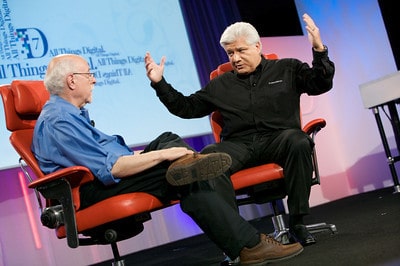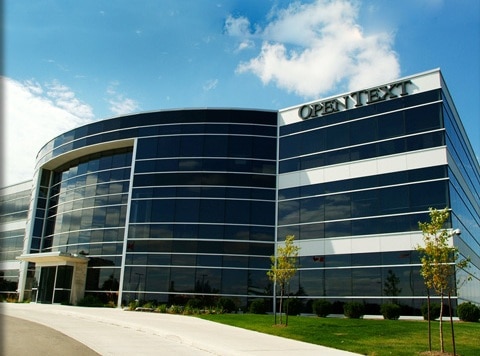
1. Negativity about Research in Motion: Six Counter Arguments

When Research in Motion (TSX:RIM) reported its Q2 2011 results this past September the numbers, which beat the street’s expectations significantly, appeared strong enough to quell a growing negativity that had hounded the company and sent its shares near three year lows. The number of smartphone units that RIM shipped increased by 45% year over year to 12.1 million. This meant top line numbers were also way up; the $4.62-billion dollar quarter was a record for the company, and a 31% increase, year over year. Despite these accomplishments, analysts chose to focus on an increasingly competitive smart phone landscape. Shares of the Waterloo tech giant were up only marginally the next day. Cantech Letter contributor Saj Karsan found the wave of wave of negativity around RIM curious, and wrote about the value proposition of the BlackBerry maker.
2. Eight Canadian Tech Stocks that could change the Oil Sands Forever
In Alberta’s oil sands, it’s hard to trust a number. Oil sands fuel creates 82 percent more greenhouse gases than regular fuel, the U.S. Environmental Protection Agency estimates. Not so, says IHS Cambridge Energy Research Associates, who say that number is more in the range of five to fifteen per cent higher than the average crude consumed in the US. A report commissioned by the Sage Centre and World Wildlife Fund-Canada said the flow of the Athabasca River at Fort McMurray has declined almost 20 per cent from 1958 to 2003, and to continue to use it as a water source is unsustainable. Alberta’s Regional Aquatics Monitoring Program (RAMP) says all existing oil sands projects withdraw less than 1 percent of the average annual flow of the Athabasca River, far below the three percent The Government of Alberta has allocated for current and and approved oil sands projects.
The divide between those who support the oil sands and those who oppose it is deep, but now matter how deeply entrenched the each side is, a full scale victory is extremely unlikely for either. Environmental protesters will not stop protesting, and those who defend the oil sands are unlikely to abate. But does the solution need to be a straight down the middle compromise, or is there a third path?
3. Canada’s Quiet Crisis
Are high resource prices masking an underlying crisis in the Canadian economy? No less of an authority than Denzil Doyle, who many believe could be the most important figure in Canadian technology history, thinks our economy is not nearly diverse enough. We talk to the man who was founding president of Digital Equipment Corporation’s Canadian subsidiary, invested in numerous technology startups as Chairman of Capital Alliance Ventures, and served on the board of Mitel, Gennum, GEAC Computer and Newbridge Networks about Nortel, taxes, the tar sands, and why Canada needs Research in Motion to stay independent.
4. Ten Moments in Canadian Tech Stock History that Changed the World
Is it inevitable? No. Is it probable? Yes. If you are a Canadian inventor, and your work is of the highest importance, it will probably be commercialized in the United States. One way or another, this is the fate of many of the best Canadian inventions. Ask Henry Woodward, who sold US Patent 181,613 to Thomas Edison in 1874 -that was for the light bulb. Or talk to James Gosling, the Calgary tech geek who invented the Java programming language while working for Sun MicroSystems. Or even George Retzlaff, a CBC director in Toronto, who invented instant replay during a 1950 episode of Hockey Night in Canada and was actually prevented by the CBC from reusing it.
Every now and then, however, a Canadian inventor not only hangs on to an invention, but the intellectual property ends up in a Canadian listed public company. Perhaps without even being aware of it, millions of Canadians have had a financial stake in some of our greatest achievements, and supported Canadians who have changed the world. This is the criteria we put forward for this list. What are the greatest Canadian achievements that we all could have, in some way, owned a piece of in our RRSP’s (before the Canadian only ban was lifted on those savings plans)?
5. Tomorrow’s Leaders: Ten Canadian Tech Stocks for the Future
At Cantech Letter we like value. Talk to us about a tech stock trading under one times sales with 45% of its market cap in cash and our ears perk up. Admittedly, though, being an adherent to any discipline mean you sometimes miss stuff that falls outside your parameters. The Canadian techs listed below are by no means smoke and mirror jobs. There’s no illusion to the leadership role Westport Innovations (TSX:WPT), which has its roots at The University of British Columbia, has carved out for itself. But at nearly five times sales, the stock falls outside our screens for value; we like to uncover Canadian techs trading under one times sales. That said, the ramifications for Westport’s natural gas engine technology are absolutely immense, meaning the company may fill in the value behind that multiple with an ease that value plays cannot.
6. My 1996 investment in RIM; Adam Adamou Remembers

In May, 1996 Caseridge Capital’s Adam Adamou was a Senior Investment Manager at Working Ventures Canadian Fund Inc. (now operated by Growthworks Capital). Working Ventures’ mandate was to invest in small to mid-sized Canadian companies, with Adam focusing primarily on the technology sector. Pages 135-136 of “Blackberry:
The Inside Story of Research in Motion” notes that Adamou was the first person that Jim Balsillie pitched to in a pre-IPO institutional series of meetings. Weeks later, RIM sold 10 million special warrants at $3.40 to five institutions, including Working Ventures. So what does Adam remember about investing in what, arguably, is the greatest Canadian company ever, before anyone else?
One only has to look to some of Canada’s largest tech companies to learn that the subject of tech stocks declaring a dividend, especially those loosely classified as growth stocks, is a contentious issue.
At CGI Group’s (TSX:GIB.A) annual general meeting this past January the Globe and Mail reported that CEO Michael Roach was grilled repeatedly on the matter. “Personally, I would fare very well from a dividend,” he responded “I kiddingly say, ‘My wife would love a dividend,”. Roach clarified his belief that dividends are not the most effective way to use cash, and that it is better to deliver superior returns over time. The subject of Research in Motion declaring a dividend is a contentious one with many institutional shareholders, who took up the debate after the Blackberry maker purchased 12.3 million of its own shares during the third quarter of 2009.
There are several issues at the heart of the matter. Some believe that the very declaration of a dividend is a white flag; a sign that management no longer possesses the confidence or direction to turn a nickel into a dime or a quarter. Others believe that a dividend is another way to line the pockets of the management, who often own large amounts of stock. Still others believe that, as in the case of RIM, the money could be put to better use in a share buyback program, which increases every shareholders value by effectively canceling outstanding shares.
8. Rolling Back the RIM: Inside Research in Motion
In 1992, RIM CEO Mike Lazaridis hired a thirty one year old Harvard MBA named Jim Balsillie as vice-president of business development. Balsillie invested $125,000 of his own money and obtained a 33% interest in the fledgling company. Two days later Balsillie asked RIM accountant Mike Vasilliou to produce a balance sheet showing how much the money had improved the company. But Vasilliou could show him nothing. The money was already out the door to cover overdue payables. Today, RIM’s Blackberry has become a household name and the company an unrivaled Canadian success story. Research in Motion has sold over 75 million smartphones -nearly half of those in the past year alone. Released in early 2010 Rod McQueen’s “Blackberry: The Inside Story of Research in Motion” was a bestseller. The book is fascinating read and an important document of decades long “overnight” success story that RIM became. We sat down with author Rod McQueen to talk about the book. Oh, and that $125,000 that Balsillie invested? We don’t want to spoil the end of the book for you or anything, but in the end it worked out alright…
9. Ten Canadian Life Sciences Stocks that could Change the World
It’s been nearly a century since Canada’s greatest achievement in biotech took place; the discovery of insulin by Frederick Banting and his assistant Charles Best, in 1922. While nothing since has matched that miraculous feat, which has saved countless millions of lives, it’s not like Canada has been sitting still in the meantime. Canadian researchers have contributed to The Human Genome project, cracked the genetic code of the mosquito that carries the deadliest strain of malaria, and deciphered human chromosome 7, which holds the gene for cystic fibrosis.
But despite our many achievements in the life sciences, many experts believe our foothold, as a nation, is tenuous. An extensive 2005 report by the Conference Board of Canada found that although the country has “enjoyed a history of good performance in biotechnology thus far…we are not well positioned for the future”.
The Companies listed below, which run the gamut from RNA interference therapies to vaccine and drug delivery systems, are trying to carry the torch. All have innovative, exciting ideas and have passed the most basic of all tests in the sector; they have all had success raising money in the Canadian capital markets. We rank these public companies according their market capitalization as of Friday, November 26th.
10. Revenue Per Employee: Ranking Canada’s Techs
Efficiency. It’s the dream of technology. Dishwashers, refrigerators, and personal computers are mainstays of most every home today, but they were once the time saving devices of the future. The technology dream for investors has always been the high-margin appeal of intellectual property; invent a piece of software that everyone needs, hit the copy button and watch the profits roll in while you sleep. While the days of that kind of windfall have probably gone to same place as Microsoft’s triple digit growth, the right technology can still underpin an extremely efficient business. A recent look at US companies with high revenue per employee inspired us to wonder if our Canuck equivalents are faring as well. It turns out, in many cases, we are doing better.
Leave a Reply
You must be logged in to post a comment.





 Share
Share Tweet
Tweet Share
Share




Comment